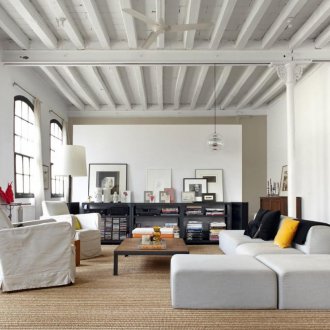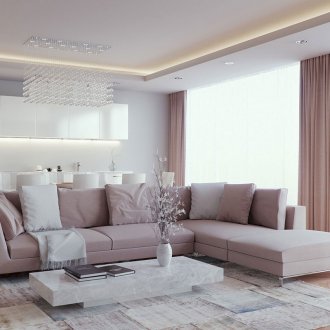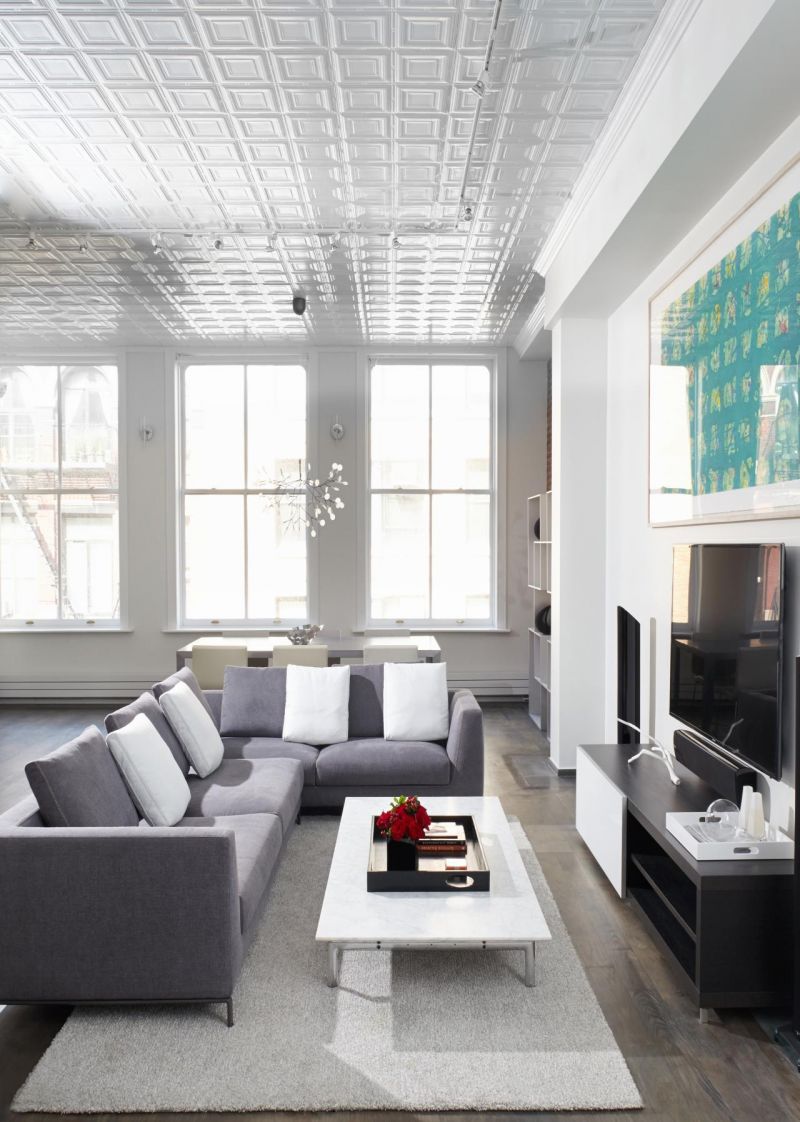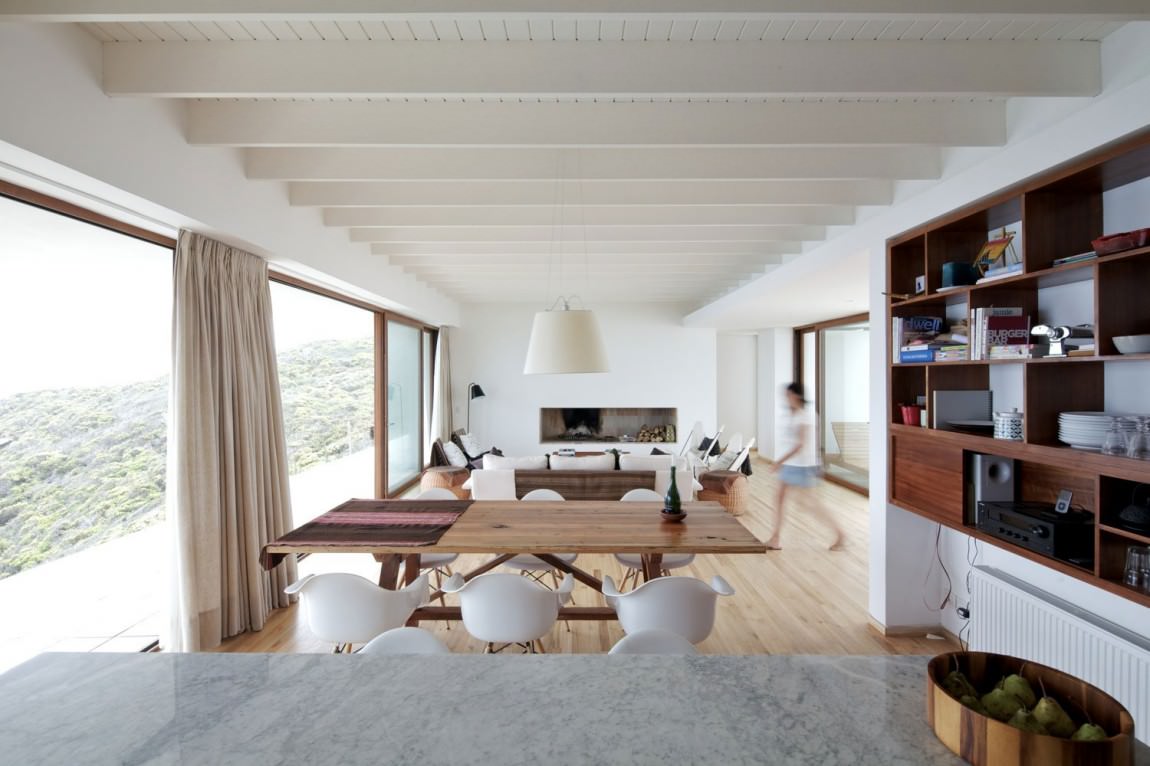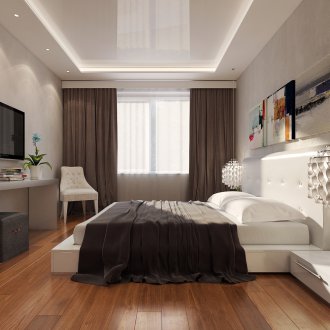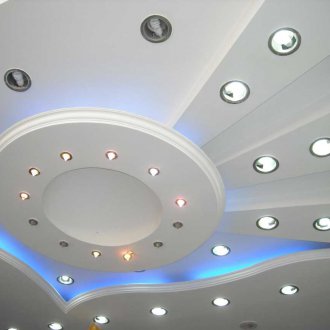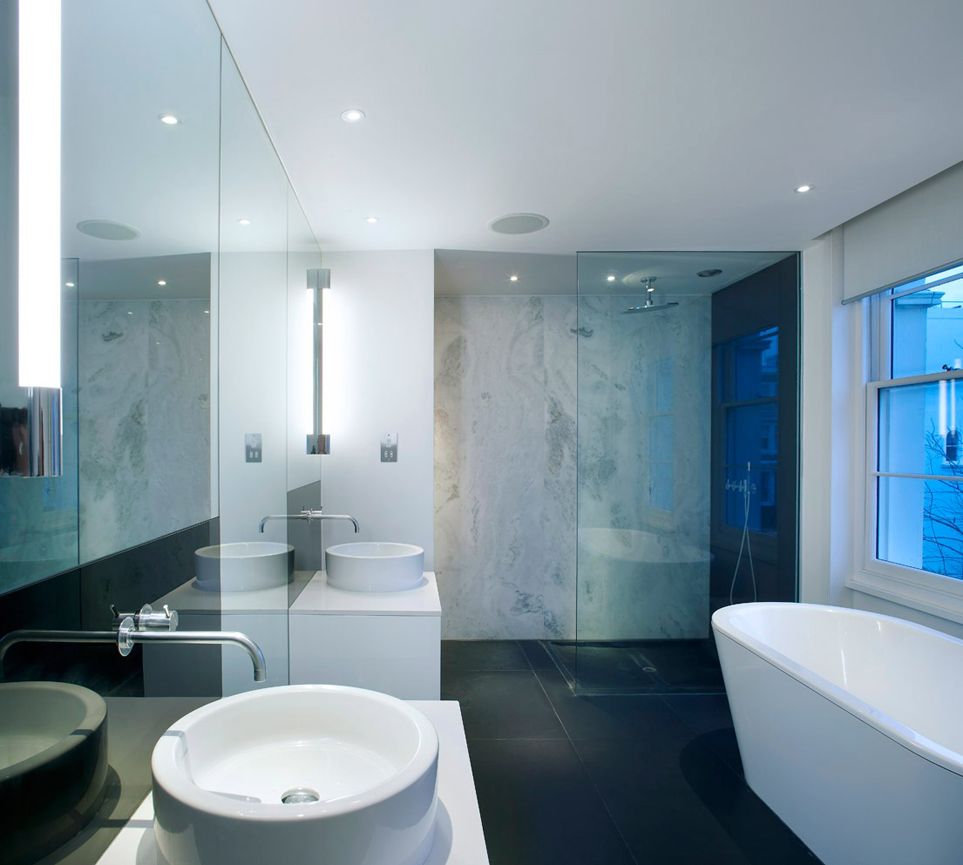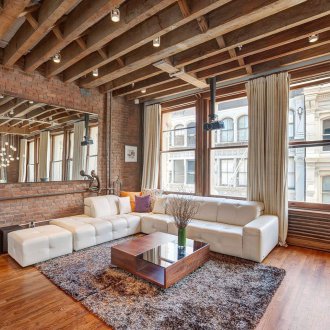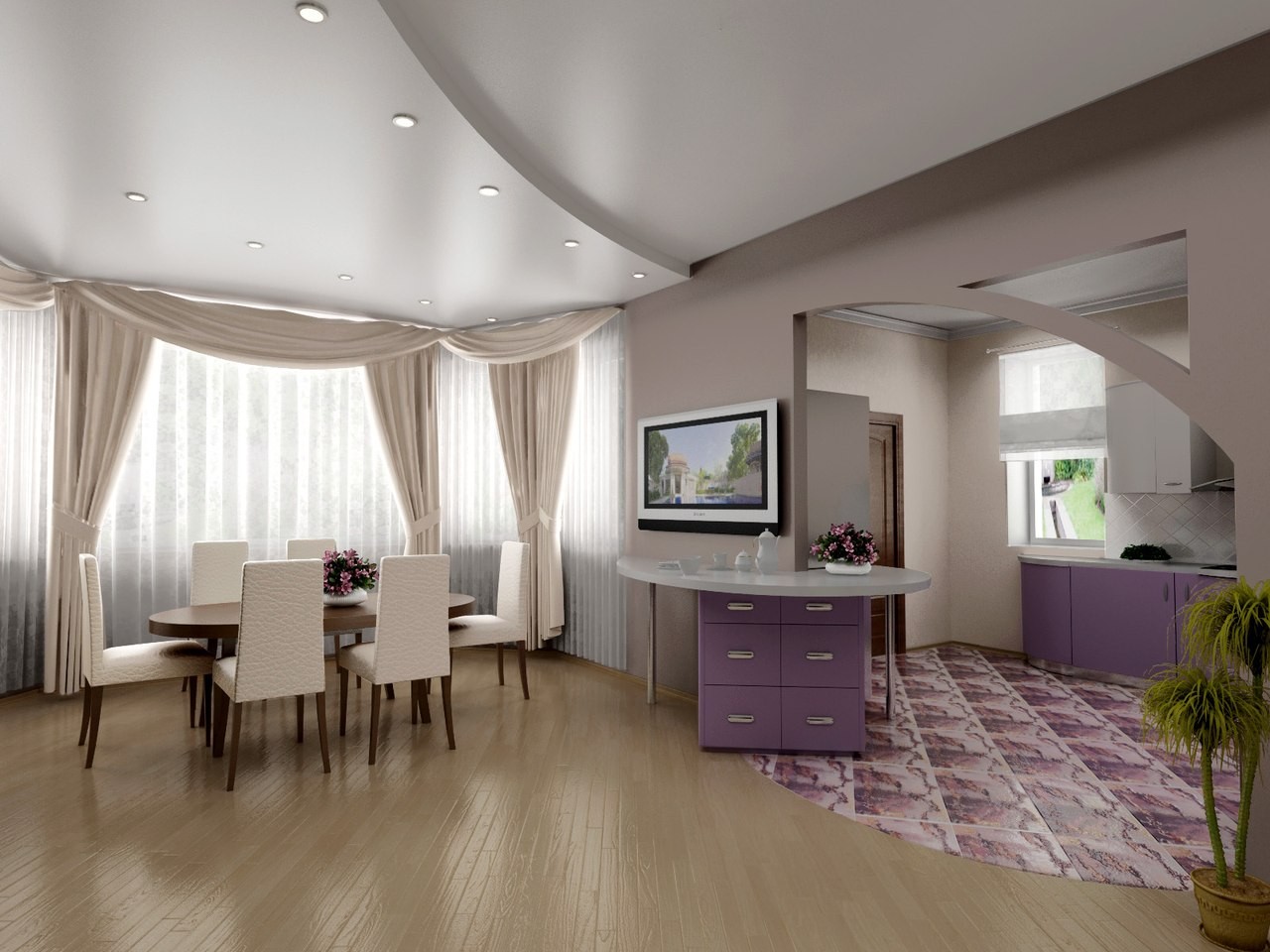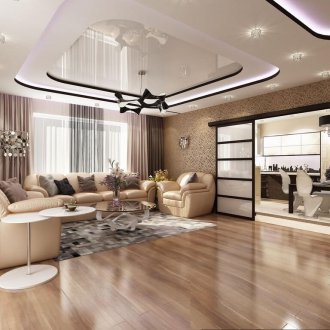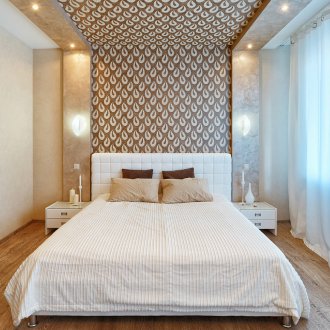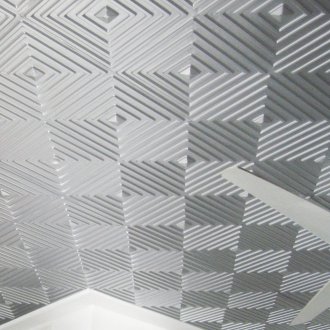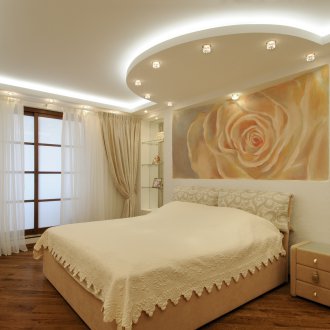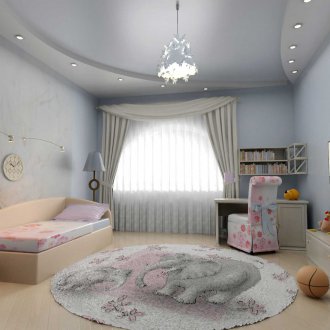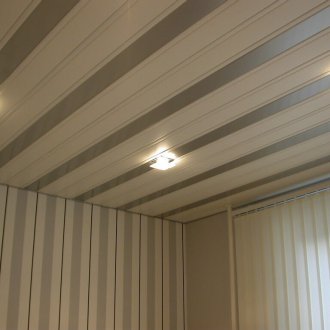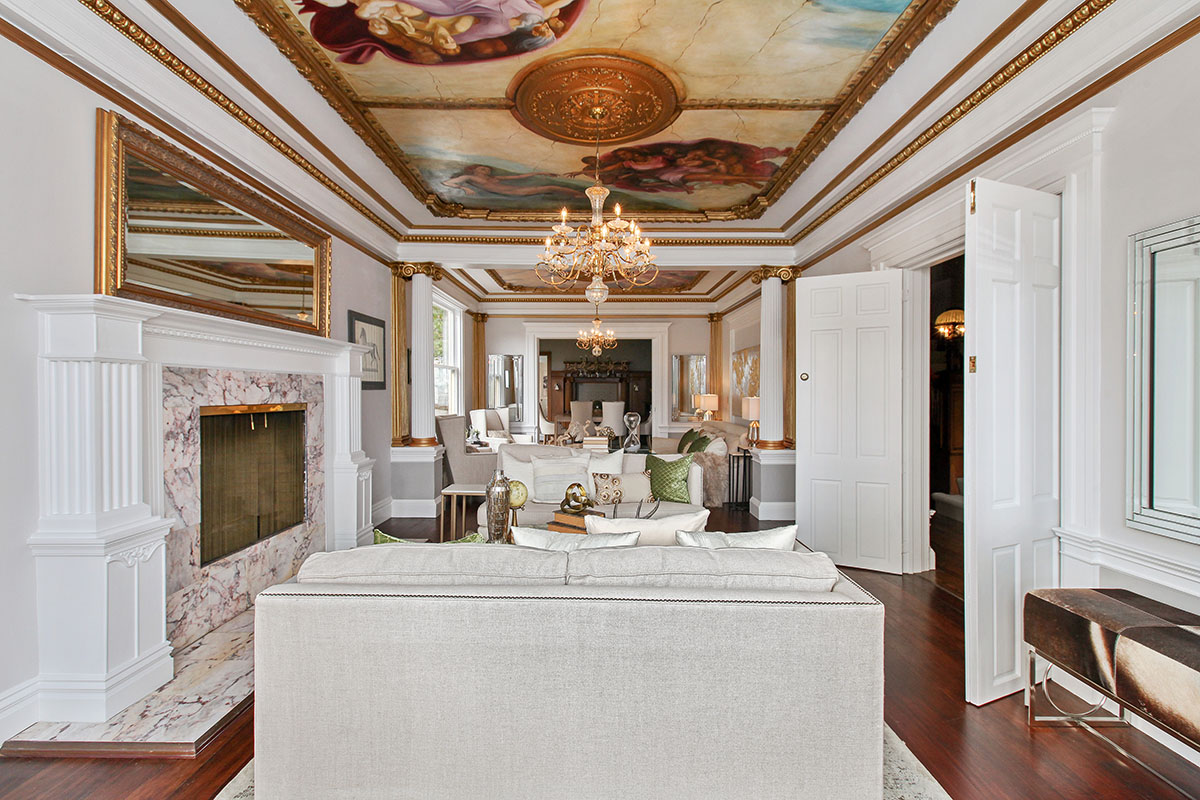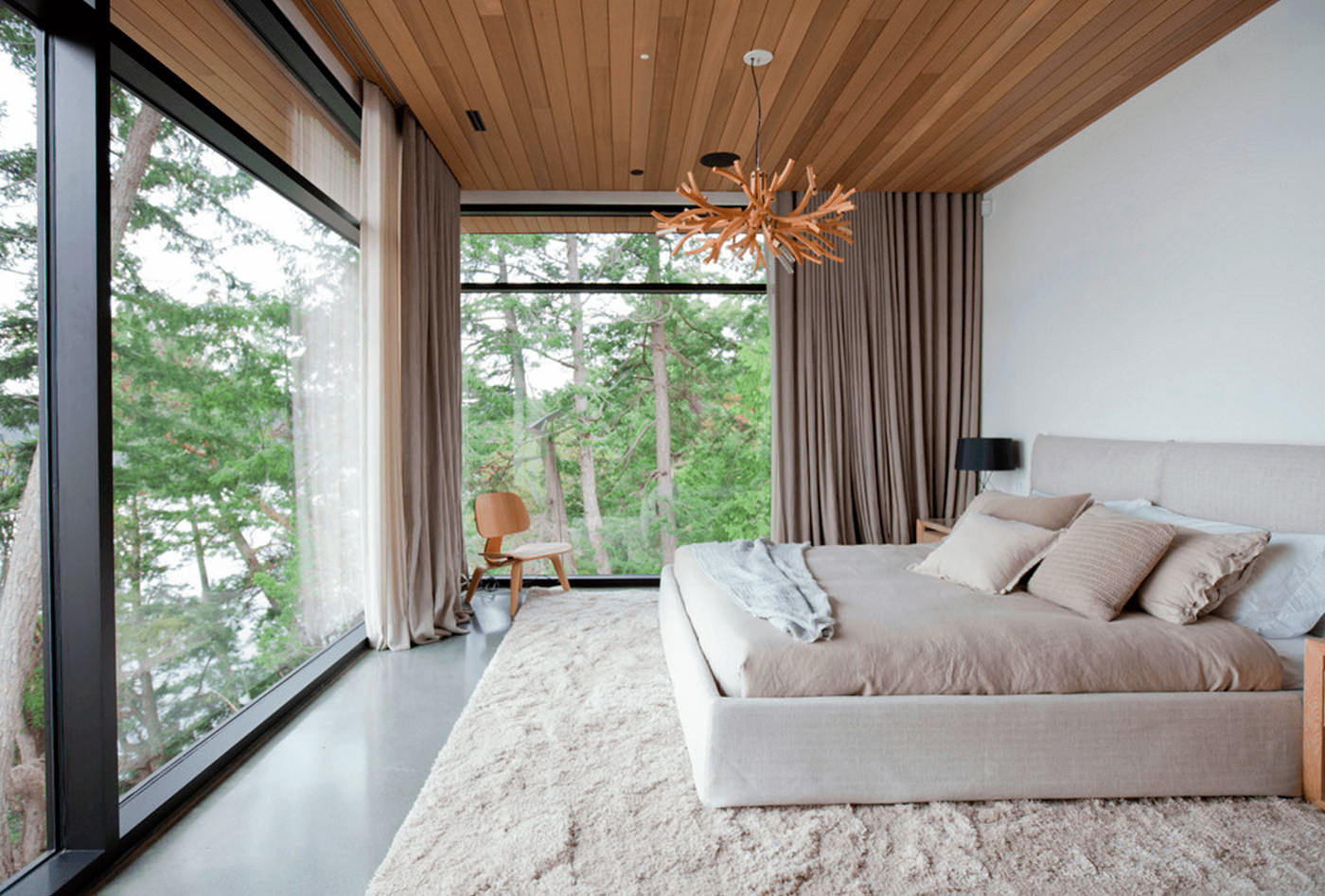What ceiling to choose for a modern apartment?
Content
The integrity of the interior is impossible without the appropriate design of the ceiling. Today materials of different prices, quality, design are available.
Kinds
Structurally, ceilings are divided into four types:
- plastering;
- outboard;
- filed;
- stretch.
When deciding which ceiling to choose for a particular room, it is worth considering that each of these types has advantages and disadvantages, restrictions on installation in the premises.
The texture of the ceiling is satin, glossy or matte. The first two varieties are more elegant, festive, appropriate in the living room, dining room, in the kitchen. The third is calmer, it should be selected for a bedroom or an office.
Plastering
A familiar classic, involving painting or wallpaper. Many have chosen it for years and are confident that today is also the best option. However, experts warn: lightness and cheapness are possible only if the foundation is even and in good condition. Otherwise, most often in Khrushchev, the cost may exceed the price for the installation of a modern design.
Pros:
- space is not selected for height, therefore, they are good for houses with low ceilings;
- ease of operation on a fairly flat surface;
- hygiene: there are no hidden cavities, as in multilayer structures where cockroaches can settle.
One, but significant minus is increased sensitivity to moisture, so after the flood from above you will need to do everything anew.
Tension
The most expensive, prestigious option, performed exclusively by specialists. This is a fabric or film stretched over the frame. The frame is fixed to the main ceiling or walls. An impeccable plane is created that cannot be visually distinguished from a real ceiling.
Made of two materials:
- PVC film: matte or glossy surface; if the width exceeds two meters, there will be seams;
- polyester fabric: matte only, but seamless.
Dimensions and texture can be decisive in the matter of which stretch ceiling to choose. A good solution is a combination of suspended and suspended structures.
Pros:
- longevity: the guarantee is given for 10 years, although in practice the term is extended;
- in the event of an accident, withstands up to ten buckets of water per square meter;
- water is easy to remove;
- suitable for fans of cleanliness and allergies: it does not collect dust, because it does not accumulate electricity;
- the chosen design is practically unlimited in color, it can be with or without a picture, with photo printing;
- the ability to dismantle and reinstall;
- does not burn.
The room will take a maximum of a couple of centimeters, but glossy ceilings visually still increase the space. Deficiencies disappear, and the coating looks perfectly flat, airy.
Minuses:
- stretch ceilings have the smallest strength of all types, film ones suffer from the most insignificant effects;
- if the canvas is poorly stretched, the draft will go in waves in the draft or during operation;
- the impossibility of free access to hidden communications.
Do not mount them in a nursery, and when installing in other rooms, contact good specialists.
There are lighting restrictions. For example, you need to choose a chandelier so that the bulbs are away from the canvas.If this is not possible, devices with minimal heating are bought.
Outboard
Structurally, this is a metal frame fixed to the main ceiling, to which a new coating is attached. False ceiling is continuous non-separable (most often from drywall) or modular.
Pros:
- modules are made of many materials, so the design you choose is embodied;
- the coating is suitable for any room;
- it’s easy to hide communications behind it; this will suit electronics lovers, good for offices.
Separate module segments can be easily dismantled if necessary; repair of the entire ceiling is not necessary.
Cons: Inappropriate in a house with low ceilings - even the mirror layer will press. Non-separable structures are hard to repair.
Hem
The load-bearing elements are mounted directly on the ceiling in the room, that is, they are, as it were, hemmed, not suspended. They take less height than suspended, but more stretch or plaster. They are made of different materials in the form of sheets or strips, the most popular of which is drywall.
Advantages of such designs:
- increase the sound and heat insulation of the apartment, therefore they are good with active neighbors from above;
- strong enough: not only a lamp, but also a decor can be attached to them;
Cons: not always compatible with moisture, which must be taken into account when choosing a ceiling in a toilet, bathroom, and other similar rooms. Due to the scarcity of colors, the choice is limited.
Materials
To choose the material for covering the ceiling correctly, you need to take into account the purpose of the room, financial capabilities, personal preferences.
Wallpaper
Dense varieties are used: vinyl, non-woven, glass. The latter also perform a reinforcing function, do not tear, are resistant to moisture, fire, and do not suffer from repeated repainting.
Pros:
- affordable price;
- immunity to humidity;
- ease of sticking;
- tireless replacement.
Liquid wallpapers look interesting. They are spray-painted on a dry, clean surface.
Cons: in order to please the result, the surface is carefully prepared. A fungus may appear at the joints.
Ceiling painting
Acrylic water based paint is used. We highlight its advantages:
- dries quickly without a pungent odor;
- resists water, fungus, mold;
- easy to clean;
- available in a rich palette;
- cheap.
There is no problem with which color to choose.
Minus: the painted surface must be perfectly smooth. Hence, careful preparation is inevitable.
Plastic
More expensive material, but lasts longer than many other materials. It is a sheet mounted on a metal frame. They come in different sizes, colors, glossy or matte.
Pros:
- absolute moisture resistance;
- the appearance of mold and fungus is excluded;
- any panel can be easily removed;
- ceiling communications are hidden.
Cons: lowers the ceiling, be sure to invite the master.
Drywall
The question of which material to choose does not arise for many: of course, drywall. Simplified installation is real with it, when the sheets are hemmed directly to the ceiling. It is used if it is easier to hide the surface than to refine.
Pros:
- implementation of any design ideas;
- the surface is perfectly flat, comparable to an expensive stretch ceiling.
In other cases, this is not possible.
Minuses:
- work is done only by specialists;
- "Eaten" height;
- free access to electrical wiring, other camouflaged objects is impossible.
The finished structure is putty and stained with acrylic.
Tile
A simple and inexpensive way to finish, especially on the ceilings in the bathroom, hallway or kitchen with a simple design.
Pros:
- easy to choose the texture, size, color, pattern;
- self-assembly possible;
- replacing tiles is simple, and if any segment is damaged, repair of the entire ceiling surface is not required;
- moisture resistance, immunity to fungus or mold;
- if the old design is boring, the tile is easy to repaint.
The main advantage is that it is even glued to the problem ceiling in the house, it covers all surface defects (except for significant differences).
For different rooms
When choosing which material is most suitable for a particular room, you need to be aware that in addition to beauty, it requires compliance with its purpose and functions.
Living room
The main room of the apartment, in which any expensive decoration is appropriate. The best ceiling in the hall is multi-level or combined. It zones spacious rooms, and in modest ones - visually spreads the space.
Glossy stretch fabric and drywall also cope with status tasks. Only in extreme cases, you can choose plastic panels for the ceiling or other low-cost design.
Bedroom
The main requirements for the room are hygiene, comfort, safety, therefore, determining which ceiling to choose in the bedroom, they definitely refuse cheap synthetics such as PVC, polystyrene, and other similar materials.
To make it easier to breathe in the room, a simple single-level structure is chosen, without niche dust collectors
The color of the ceiling is most often traditional white, combining with any room decoration. Blue calms, mystical violet is acceptable in a strictly defined dose: excess negatively affects the psyche. Optimistic green is not bad, but it stimulates the brain, preventing it from falling asleep. Yellow encourages creativity, therefore, for the bedroom, it is also not very. Muted pink creates a romantic atmosphere.
As well as in color, there is no hard decision on what stretch ceilings to choose for the bedroom according to the texture: matte and gloss are suitable. It depends on the preferences of the owners: whether they want peace or celebration.
A bathroom
A place of high humidity and hygiene standards, so the ceiling in the bathroom and toilet is chosen according to the following criteria:
- high resistance to water;
- the ability to mount hoods, lamps, other built-in elements;
- ease in leaving;
- free access to hidden elements.
Suitable ceiling materials in the toilet or bathroom:
- tension - the best, but expensive;
- plastic panels;
- rack and pinion.
Whitewashing into the bathroom is definitely not good - it's the day before yesterday, and drywall is very conditionally suitable, even moisture resistant.
Since the room is small, it is better to choose light colors.
Regardless of the type of finishing material, the main ceiling in the bathroom must be primed so that moisture, fungus, mold does not appear, and the service life of the new coating is extended.
Kitchen
The same requirements for the material as for the bathroom, plus the need to remove traces of steam from cooking.
Stretch webs are more suitable for this than others. What stretch ceiling is better to choose for a kitchen by texture? Glossy because it is easier to care for.
However, they are not affordable for everyone, but there are more affordable options:
- polystyrene tile;
- plastic;
- gypsum board of moisture resistant types;
- whitewashing or painting: if finances do not allow the purchase of other materials.
Color should be preferred light, so that the dark kitchen vault does not visually reduce the already small room.
Hallway
A significant limiter is the minimum installation space.
Fit:
- drywall - if height allows;
- glossy stretch canvas - the best choice, visually increasing a small space;
- PVC tile - only if the budget is limited;
- wallpaper;
- whitewashing or painting is a commonly used option, but the surface needs to be leveled.
When choosing which ceiling is better, it is recommended to abandon structures that eat up height.
The ceiling is rarely updated, so it is undesirable to save on quality, and if possible, to do everything right away is beautiful and reliable. Then it’s not a shame to receive guests, and I’m very pleased.
